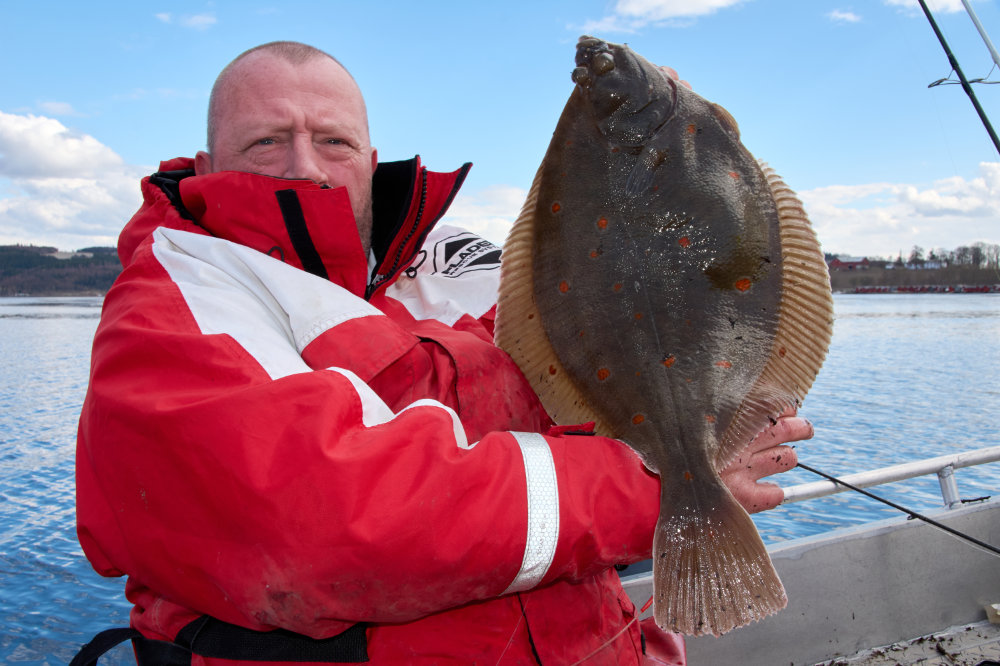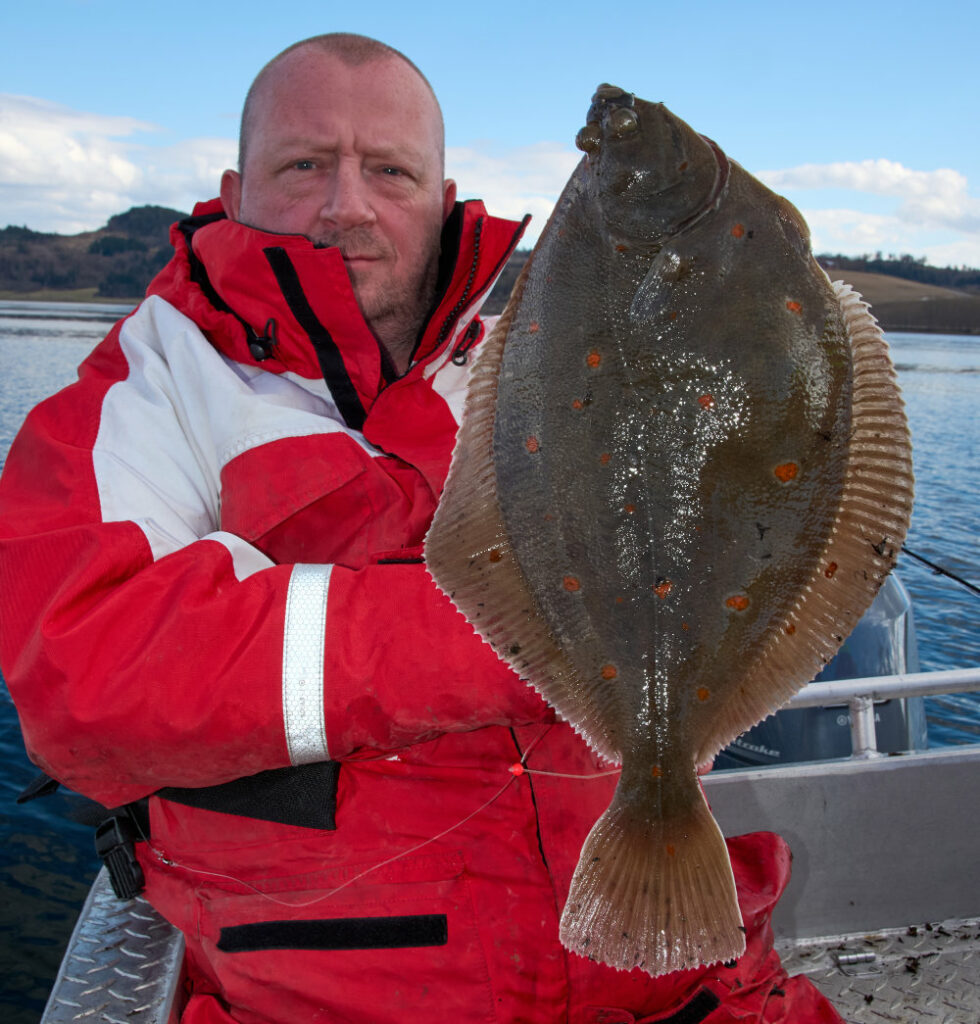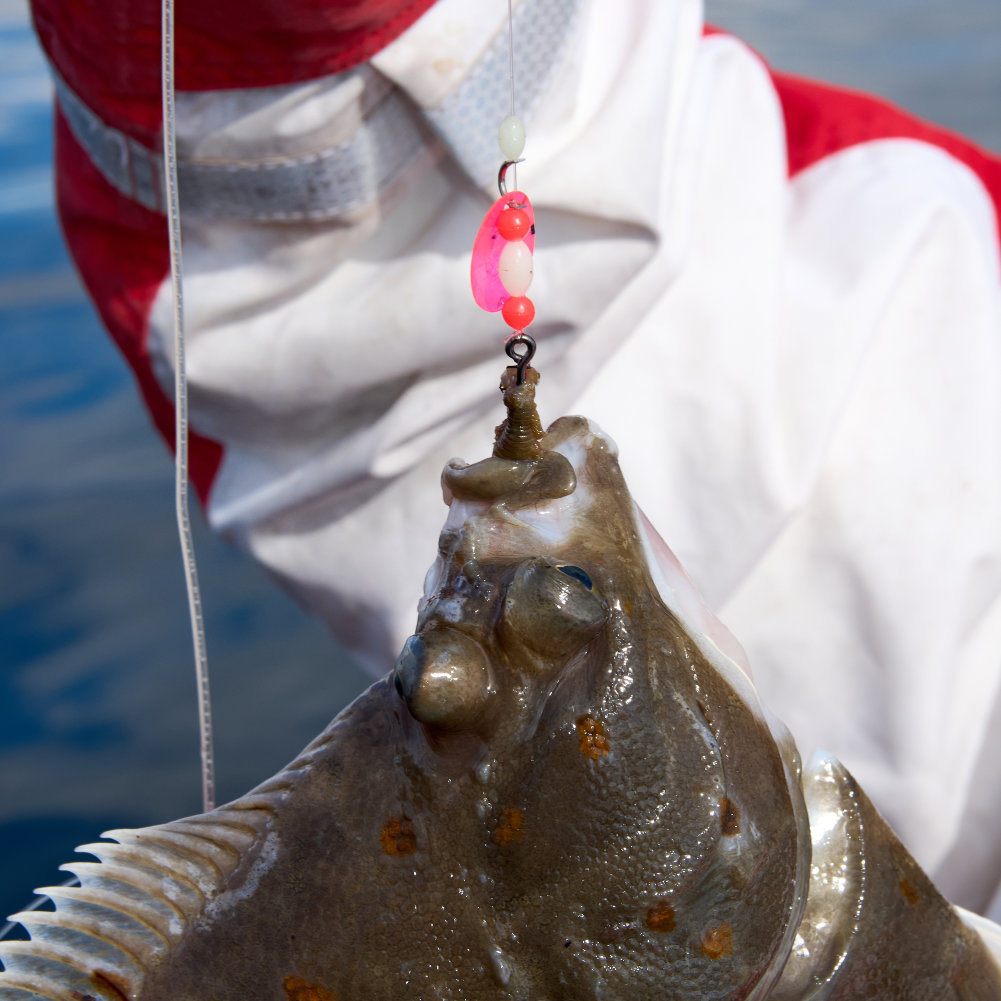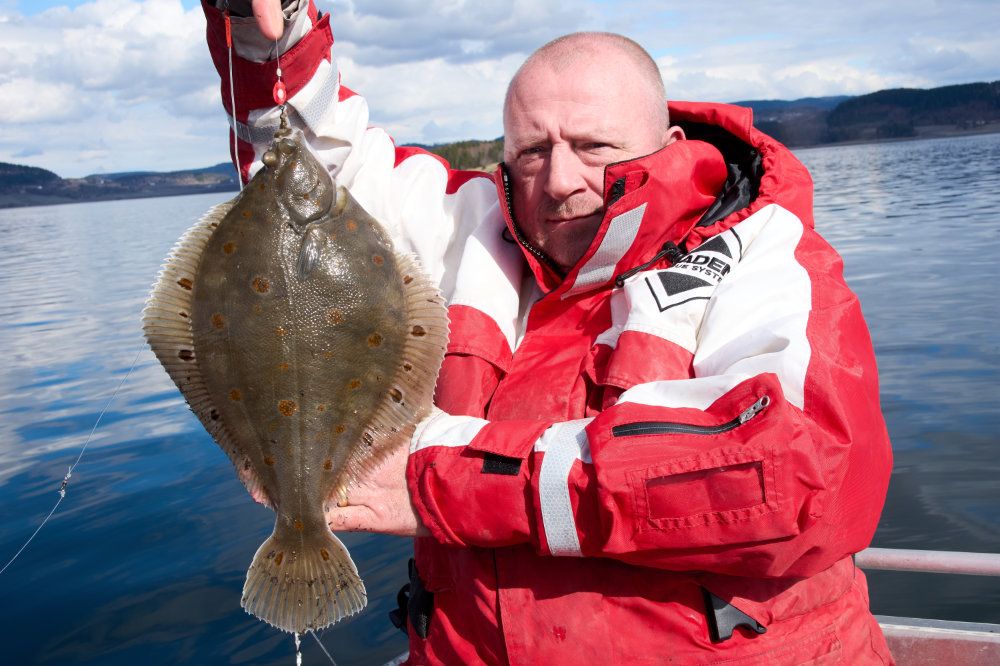Offshore plaice are an obliging fish and will feed predictably and consistently through much of the tide. It’s easy to overcomplicate tactics for plaice. A simple approach aiming to keep the bait as tight to the seabed as possible, while being aware that plaice need time to catch up with and eat the bait sounds obvious, but it’s not always easy to achieve.

Plaice Fishing Season
March is the start of the plaice fishing season, with fish returning after spawning, building in numbers quickly. These early fish can be physically short of their best, but quickly pile on condition and weight as they reach the inshore feeding grounds. By May, most will be close to full condition and feeding heavily. The months of July, August, September, and October offer the best chance of a bigger fish that can run up to 3 lbs or more. Their numbers then thin out quickly as the sea temperatures start to cool in late October.
Habitat
Offshore plaice are present on areas of rising sandbanks, typically on the angled inclines. They will move at slack water to position themselves on the inclines facing into the tide where the tide flows over the tops of the banks washing food out which then drops down the inclines towards the waiting plaice. The best spots are where a generally flatter seabed starts to rise up the incline of the bank to about a third of the total height of the bank. Plaice will be spread on the inclines, but this lower third is a real hot spot.
Plaice will also be found in areas where boulder ground is mixed with clean sand patches which the plaice lay on. These are often the spots for the bigger plaice later in the season, and pay special attention to deeper areas of reef ground where the demarcation line of sand meeting rough ground reef is broken up and not specifically defined.
Also target offshore and inshore mussel beds, especially those situated at the heads of estuaries. The plaice will sit in depressions in the mussel beds where the tide can flow over the top of them both ambushing food but also moving off and searching out food on the move.
A habitat frequently ignored are small inshore wrecks. These often see sandbanks build up on one side of the wreck and again the plaice will be on the inclines letting the tide bring food to them.
Weather and Tides
Ideal weather conditions are during periods of flatter seas with not much sea swell. Cloudy overcast days out fish bright sunny days. Plaice feed best when the water clarity is good with minimal suspended sediment. The fishing will be on the drift, so light winds are ideal and the best catches are taken when the wind blows against the tide, holding the boat up and slowing the drift speed down. This gives maximum time over the fish.
It can vary in some areas, but generally the best tides to fish are the smaller neap and middle-sized tides, especially the tides rising higher every day before the biggest spring tides. The odd fish can be taken over slack water off the top of the banks as the fish move station. The best feeding spells typically occur in the second and fourth hour of the flood, with the middle hour being better on the neap tides than on the bigger tides. The same pattern will occur during the ebbing tide, with the middle period seeing the best of the fishing.

Tackle
Depending on the speed of the tide flow either side of slack water, you can often get away with a Tronixpro Banzai 6/12lb Boat Rod and either a small fixed spool reel or 6500 sized multiplier. Tronixpro X8 Probraid line around 15 lbs improves bite detection, but always fish a 20 lb Tronixpro Fluorocarbon leader twice the length of the rod to stop the fish seeing the braid and to minimise seabed abrasion on the braid.
In deeper water and faster tides, go for a Tronixpro Banzai 12/20lb rod with a compact multiplier holding 300 yds of 20/30lb Tronixpro X8 Probraid and again a Tronixpro Fluorocarbon leader.
Keep rigs simple and tangle free. A good one is to simply slide on to the leader a Tronixpro Zip Slider boom followed by a 5 mm bead and then tie on a size 4 Tronixpro Rolling Swivel. To the swivel, tie on 3 to 4 ft of 15/20lb Tronixpro Fluorocarbon for the hook length. The hook should be a Tronixpro Aberdeen pattern in sizes 2 to 1/0. Plaice have small mouths so don’t use too big a hook. If bites are difficult to come by, try dropping the hook length down to 12 lbs or even 10 lbs breaking strain. This improves the movement of the bait, but also minimises the chance of the plaice visually seeing the hook trace. Fluorocarbon is nearly invisible in water, but in very clear water it can glint and give off reflection, so lighter hook lengths work best in these conditions.
Plaice sometimes like flashy beads and spoons mounted just above the hook, but not always, so experiment on the day. The classic for plaice are alternate green and black beads, or try red and yellow. Also try a Tronixpro Blade mounted on a clevis pin just below the top bead nearest the boom. A spoon blade that revolves is always more successful than one that just flutters a little and the clevis pin guarantees this.

Some anglers do well by adding a Tronixpro Rattle Bead in place of the spoon. Make sure you position these a good 8-inches above the hook and lock them off with a 5 mm bead and a separate length of Tronixpro Rig Gum tied over the hook length as a stop knot. The rig gum knot can be slid up and down on the hook length to get the rattle bead positioned just right.
Brightly coloured lead weights can also add more attraction, the best colours being pink and white, but also try the luminous green and yellow ones.
Top Baits
Plaice will take lug baits tipped with a long thin sliver of squid, also lug tipped with rag, lug tipped with razorfish or peeler crab. Plaice take cocktail baits created from two or three different baits, but the killer is that long sliver of squid able to flutter in the tide which will attract the fish in.
Tactics
To minimise terminal rig tangles, let the rig down to the seabed slowly, occasionally pausing for just a couple of seconds to let the hook length fully extend. When you feel the lead weight touch the seabed, release about 20-yds of line and hold your thumb on the spool. If the lead weight stays in contact with the seabed when fishing a tight line, then your presentation is good. If not and the weight is either bouncing up off the seabed or fully lifts up, then change to a heavier lead weight. You must constantly adjust the size of the lead weight to keep the bait in constant contact with the seabed as the boat drift and tide flow changes.
Also release more line off the reel and be comfy with fishing up to 60 to 80-yds away from the boat. Fishing at this distance means you have a shallower angle to the line which improves bite detection and bait presentation. You’ll feel the lead weight dragging over ripples of sand, maybe small beds of fine shingle. Every 30 seconds or so, release a few yards of line then re-engage the reel. This pause in the travel of the bait allows a chasing fish to catch up and eat the bait.
Bites are typically a few gentle taps, then a gradual increased weight being felt on the rod tip. On feeling the bite, release a few feet of line, then re-engage the reel. There is no need to lift the rod and strike. Just let the line tighten, which will normally hook the fish for you.
Another trick to try is to occasionally lift the rod tip with a tight line to deliberately lift the bait up off the seabed, then let it fall back releasing a few feet of line. This lift, flutter and then drop of the bait will often induce a bite.



